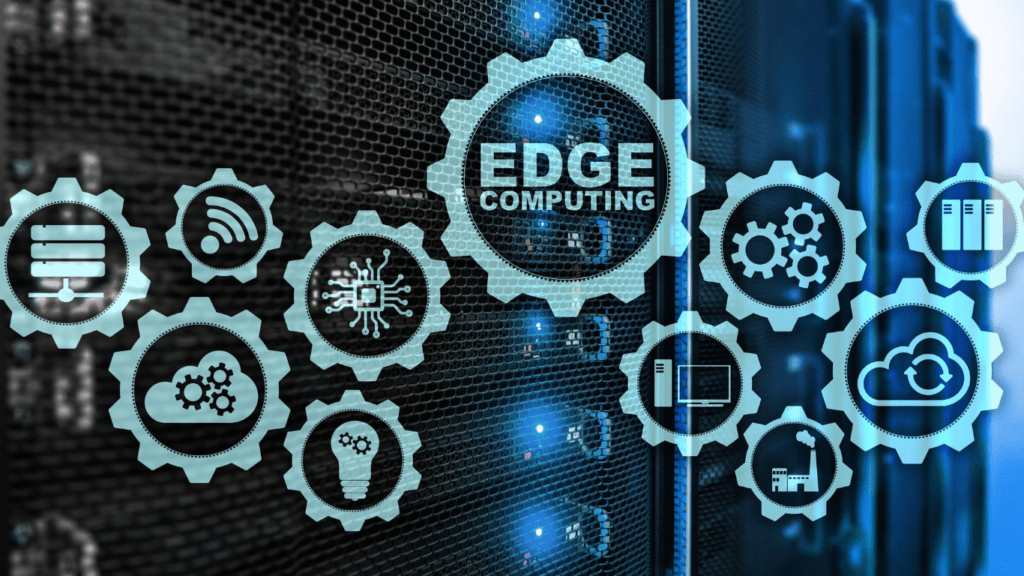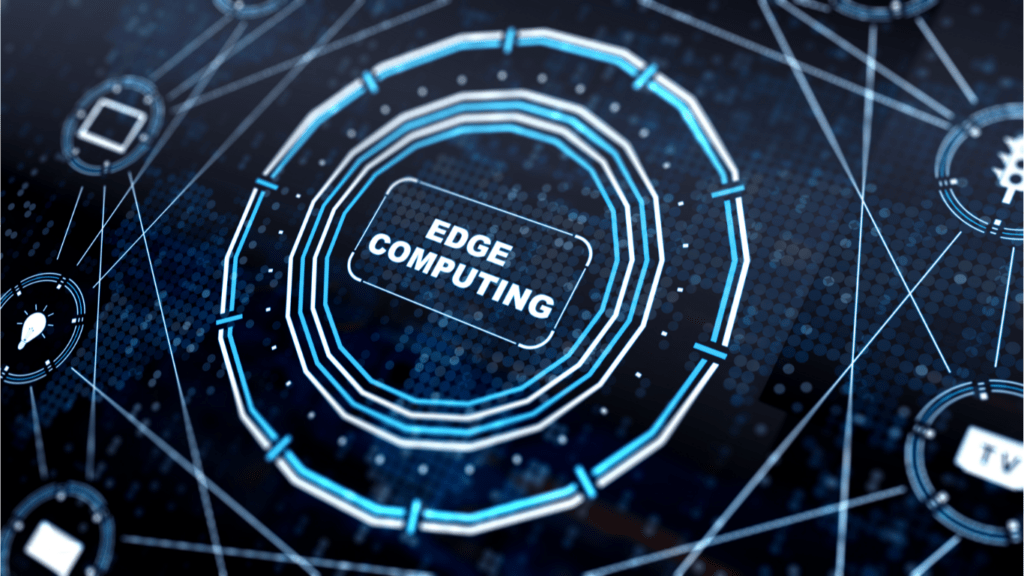When it comes to next-gen application development, speed and efficiency are everything. Users demand seamless experiences, and developers are constantly looking for ways to reduce latency and enhance performance. That’s where edge computing steps in, revolutionizing how we process and deliver data in real time.
Understanding Edge Computing
Edge computing processes data closer to its origin rather than relying on centralized cloud servers. It minimizes latency, enhances efficiency, and supports resource-intensive applications.
What Is Edge Computing?
Edge computing decentralizes data processing by bringing computation closer to data sources, like IoT devices, sensors, and smartphones. This approach reduces the time needed to transfer data to and from distant data centers, improving application responsiveness. For instance, self-driving cars use edge devices to process sensor data in real time for faster decision-making. According to the International Data Corporation (IDC), global spending on edge computing is expected to reach $250 billion by 2024 due to its adoption across industries.
Key Characteristics of Edge Computing
1. Reduced Latency
Edge computing significantly lowers latency by processing data locally, avoiding delays caused by long-distance transmission. Applications like augmented reality (AR) thrive on this reduction for seamless interaction.
2. Localized Data Processing
Data is processed near its source, limiting dependency on centralized cloud systems. Industries like healthcare rely on this for critical data generated by medical equipment in real-time.
3. Improved Security
By keeping sensitive data closer to its origin, edge computing reduces exposure to cyber threats during transmission. This benefits industries focusing on data privacy, like finance and government sectors.
4. Scalability
Edge computing efficiently manages growing volumes of data, distributing workloads across multiple nodes. Smart cities utilize this for processing data from thousands of connected devices efficiently.
5. Energy Efficiency
Localized data processing decreases energy consumption linked to transporting data over long distances. This is valuable in reducing the environmental impact of large-scale data operations.
The Evolution of Application Development
Application development has moved from centralized systems to more distributed models, driven by technological advancements and user demands. Edge computing addresses gaps in traditional approaches, enabling faster, more efficient, and responsive applications.
Traditional Cloud Computing vs. Edge Computing
Traditional cloud computing relies on centralized data centers to process and store information. While scalable and cost-effective, this model creates latency issues due to the distance between end-users and central servers. Applications requiring real-time data processing, such as smart manufacturing and autonomous vehicles, often suffer from delayed responses in cloud-only environments.
Edge computing resolves these challenges by decentralizing the data processing. It occurs closer to end-users or devices, minimizing latency and enabling near-instant data analysis. For example, a smart factory can process sensor data locally, ensuring timely adjustments to machinery and reducing downtime.
Emerging Needs in Next-Gen Applications
Next-gen applications demand real-time responses, massive data handling, and advanced AI integration to provide seamless user experiences. IoT devices, augmented reality (AR), and 5G networks intensify the need for localized processing due to high bandwidth and low latency requirements.
Edge computing plays a pivotal role in meeting these needs. It supports AR applications by minimizing delays during device rendering or user interactions. In smart cities, edge systems help manage traffic data in milliseconds, optimizing urban mobility. By aligning with these demands, edge computing helps developers build applications that adapt to dynamic user behaviors and environments.
The Role of Edge Computing in Next-Gen Application Development

Edge computing plays a pivotal role in shaping next-gen applications by addressing critical demands like:
- speed
- real-time processing
- scalability
By decentralizing computation, it transforms the development landscape.
Enhancing Performance and Speed
Edge computing reduces latency, enhancing application responsiveness by processing data closer to its source. Applications like augmented reality and online gaming benefit from this improvement, delivering smooth and immersive user experiences. Decentralized processing also optimizes network bandwidth, preventing performance bottlenecks caused by cloud dependency.
Improving Data Processing and Analytics
By handling data locally, edge computing streamlines analytics and reduces the overhead of transmitting data to central servers. This approach enables faster, actionable insights for resource-intensive applications like smart manufacturing and predictive maintenance. Real-time analytics close to data sources also enhances decision-making efficiency, especially in environments with fluctuating operations.
Enabling Real-Time Interactions
Edge computing ensures seamless real-time interactions by minimizing delays, which is crucial for applications like autonomous vehicles and telemedicine. For example, self-driving cars process sensor data instantly through edge devices, ensuring safe navigation. Similarly, remote healthcare solutions use edge technology to facilitate immediate consultations and diagnostics.
Supporting Emerging Technologies Like IoT and AI
Edge computing complements IoT and AI by managing the immense data they generate locally, reducing strain on cloud infrastructure. AI algorithms deployed at the edge power advanced applications, like facial recognition, while IoT networks leverage edge nodes to perform localized processing, improving functionality in smart homes and industrial automation. This integration supports scalable, efficient solutions for complex technological demands.
Benefits and Challenges of Edge Computing
Edge computing transforms next-gen application development with tangible advantages while presenting specific challenges. Understanding these aspects is crucial for developers and businesses leveraging this technology.
Benefits for Developers and Businesses
- Edge computing offers faster data processing by reducing latency. Applications like autonomous vehicles and augmented reality benefit from real-time decision-making and seamless user experiences. By processing data locally, businesses enhance application speed and responsiveness.
- Improved security is another advantage. For example, sensitive information in healthcare or financial applications stays closer to its origin, reducing risks associated with centralized cloud breaches. This localized approach strengthens data protection compliance in industries handling confidential data.
- Operational costs decrease due to optimized bandwidth usage. Streaming platforms and IoT services reduce data transfer to centralized servers, lowering expenses. Additionally, the scalability of edge systems supports high-growth scenarios like smart city implementations or e-commerce surges.
- Edge computing also enhances energy efficiency. Localized data processing minimizes energy expenditure related to central cloud operations. This approach benefits organizations striving to meet sustainability goals.
Key Challenges and Limitations
- Implementation costs can challenge adoption. Initial investments in edge infrastructure, such as specialized hardware or edge-compatible software, might deter smaller enterprises.
- Security concerns arise despite benefits. Distributed systems create a broader attack surface, requiring robust mechanisms against edge-specific cybersecurity threats, especially in IoT ecosystems.
- Scalability becomes complex in large deployments. Managing numerous edge nodes, each with its operational environment, requires efficient synchronization and resource allocation.
- Limited processing capabilities at edge devices restrict handling highly computational tasks. For applications needing extensive data analysis, such as advanced AI models, dependency on cloud integration increases.
- Developing edge-compatible applications necessitates expertise. Adapting legacy systems or deploying advanced edge solutions requires skilled personnel, potentially creating a talent gap in organizations.


 Mikeel Wrighteners, the visionary founder of Code Hackers Elite, has built a dynamic platform that bridges the gap between innovation and community in the coding world. With a passion for empowering developers, Mikeel leads the charge in delivering timely news, expert insights into software development best practices, and career guidance for professionals navigating the ever-evolving tech landscape. His mission is to ensure coders stay ahead of the curve and inspired in their journey.
Mikeel Wrighteners, the visionary founder of Code Hackers Elite, has built a dynamic platform that bridges the gap between innovation and community in the coding world. With a passion for empowering developers, Mikeel leads the charge in delivering timely news, expert insights into software development best practices, and career guidance for professionals navigating the ever-evolving tech landscape. His mission is to ensure coders stay ahead of the curve and inspired in their journey.
